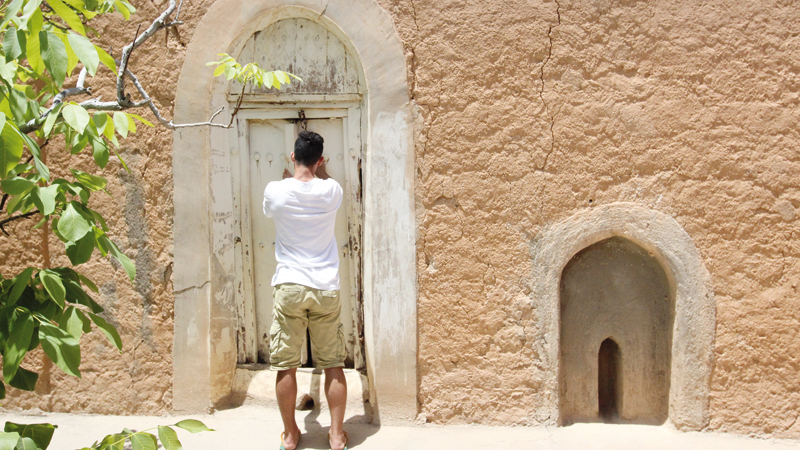

A trip to Jabal Akhdhar will not be complete without passing through the now abandoned old village of Wadi Bani Habib. Here, crumbling houses that hang on the side of the cliff makes for a breathtaking view and exploring deeper into the village, one will discover even more surprising things, a greater insight as to how the people thrived here for generations and possibly the reason why they have to abandon it.
In a late afternoon when the temperature begins to get colder, a comfortable 26 degrees Celsius even in the middle of summer, a 20-minute walk from the main entry point will lead you to stairs that open up to gardens lush with different fruit-bearing trees.
Date palms, of course, are a given but at the right season, you’d see either the pomegranates in full bloom or filled with wondrous fruits and at other times, the apricots in all their fruit-bearing grandeur.
These gardens, people say, are the reason why there are still many farmers who come back here. Although their houses may have permanently moved, many of them still come into this part of Jabal Akhdhar to tend to the bountiful things the soil provides for them and their families.
Despite being in ruin, it is still easy to make up the floor plans of the many houses that once served as comfy dwellings for families who lived here. At some point, more than 50 families called the area home. They made each of the houses their own. The paintings on the wall, the smoke covered kitchen walls, the well-decorated doors and windows showcased the kind of personalisation they made to create a worth-living sanctuary.
The alleys surprisingly lived to this day. They connected the different homes making it a fully functioning village with their own system for order and safety.
Of the many structures that were left to rot, the mosque of this old village remains functional. Houses may have been left to decay but the small mosque barely 40sqm wide was preserved and as the farmers reported, are still being used to this day.
If you are just a visitor, you’d see that the gates are bolted shut but it can easily be opened if you know how some of those old locks work. The doors too are quite hard to decipher but once it’s fully opened, the inside is well preserved and the carpet that covers the floor, despite being dusty, remained impeccably in place and in good shape.
Located at the far left corner of the main village, the small mosque still has all the necessary things one needs to be able to pray comfortably. Several copies of old Qurans are still visibly in good shape for those who’d want to do some reading.
One of the local farmers Abdu, shared that the mosque has been forgotten by many. But for the farmers who’d grown up in the area, it is still a place they come to.
“Before the big mosques were built, we have small mosques like this for us to hold our prayers. It didn’t lose its value despite the time changing and it still serves the very purpose it was built for,” he shared.
Oman Observer is now on the WhatsApp channel. Click here



